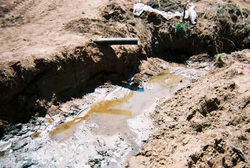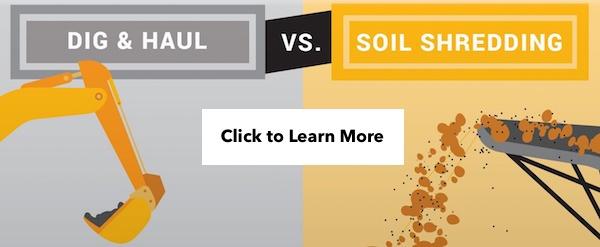Information about characteristics of soil in the subsurface is commonly collected by drilling soil borings. Whether the soil borings are for an environmental investigation or for a building project, each one can be an avenue for contamination to reach uncontaminated subsurface soil and/or groundwater. If contamination is present, it can present health and safety or legal challenges. That is why it is imperative to consider all angles when decontaminating for soil borings.
Soil contamination could be present before your project commences, or potentially occur during the course of environmental drilling. Either way, creating new areas of contamination, or spreading existing contamination, should be avoided at all times.
Some geographic and geologic areas in Texas are even managed with additional requirements. For example, drilling into the Ogallala or Trinity Aquifers is highly regulated to protect these important sources of water both from surface contamination and to prevent mixing groundwater with differing salinities.
You may want to consider the following points regarding the potential for contamination as you plan your next drilling project.
What can be done about existing onsite contamination?
Find out as much information as you can about current site conditions. Conduct a pre-drilling job walk with your drilling contractor. Your knowledge of site conditions will help you choose the best soil drilling methods, such as continuous casing during drilling. The following are examples of contamination sources or conditions.
Historic use: Farm-use pesticides may linger in soil long after farming ends; petroleum hydrocarbons and solvents may have leaked into soil and groundwater from gas stations or home auto/equipment repair; many chemicals can be associated with manufacturing processes.
Underground lines, tanks: Utility locate services can identify underground lines for sewage to natural gas. Fuel, heating oil or waste oil underground tanks may be present but not visible.
Previous spills: Unusually discolored soil or distressed vegetation may be visible.
Trash: Toxic or hazardous chemicals may be present in discarded containers; they may be open or leaking.
Contact Regulatory Authorities: This includes Groundwater Conservation Districts.
What are some preventative measures during environmental drilling?
Several good practice steps can help you avoid creating new conditions of contamination on your job site.
Entering and exiting sites clean: Drilling equipment should arrive at the job site clean. An onsite cleaning station can clean trucks or other equipment that must leave the job site.
Geologic conditions: Understand geologic and groundwater conditions at your site. For example, know whether you will need to drill through a groundwater plume of contamination or groundwater zones of differing salinity or chemistry.
Good housekeeping: Properly store toxic or hazardous materials away from the soil boring area.
Refueling or maintenance: Use drip pads or pans to avoid spills to the ground. Invest in a spill kit to quickly clean-up any leak or spill.
Stormwater drainage: Stormwater runoff can contain vehicle-related chemicals; divert stormwater from soil boring areas or seal the top of the boring.
Talon/LPE boasts more than 100 years of combined professional environmental drilling experience. We are experienced in a variety of drilling conditions in Texas, Oklahoma and New Mexico. The safety of our employees and the project site is the No. 1 priority at Talon / LPE. Contact us today for your next Texas environmental drilling project or to find out more about soil borings.


